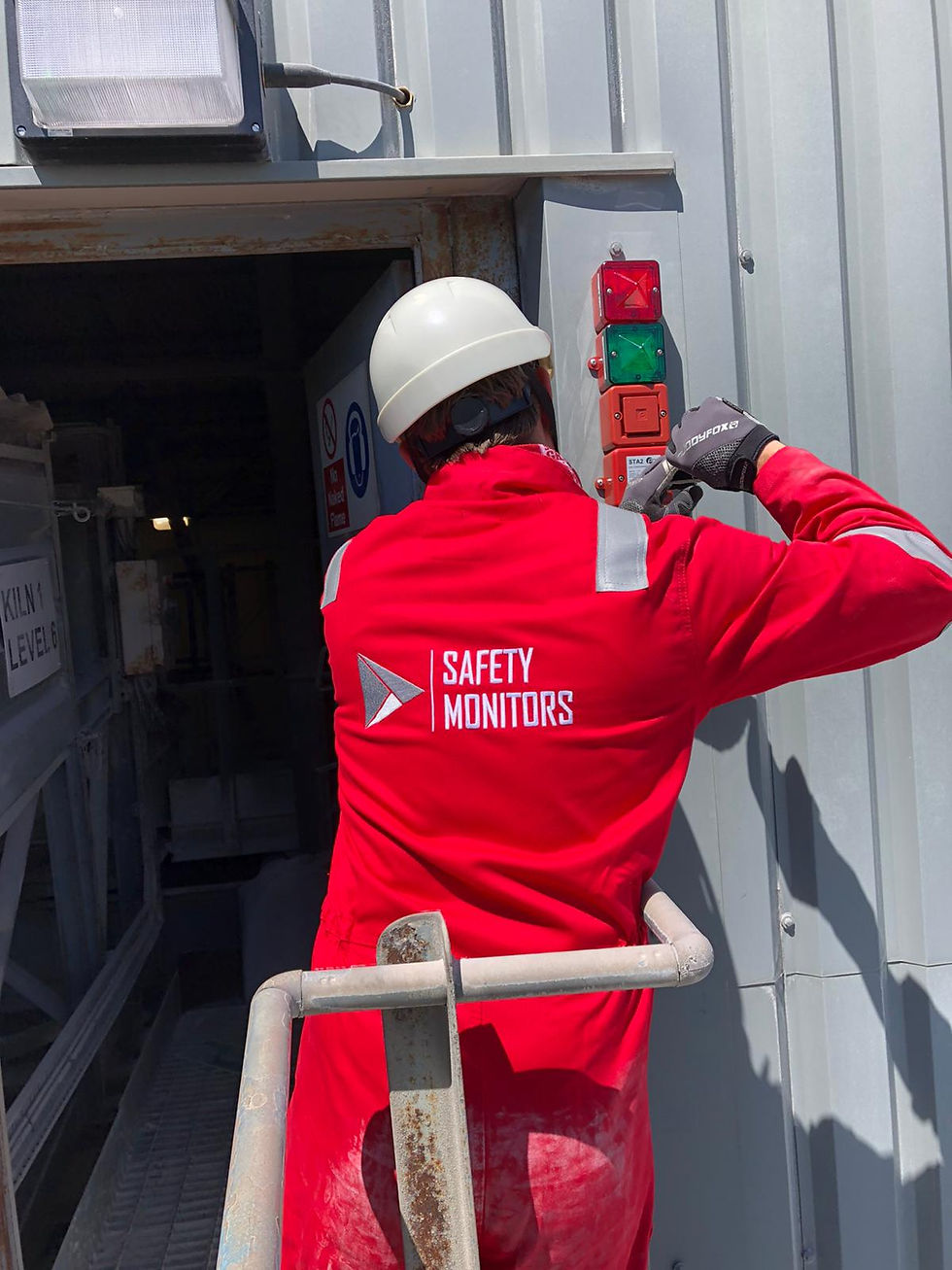Fixed Gas Detection Systems
- Alex Graft
- Sep 8, 2022
- 4 min read
What is a Fixed Gas Detection System?
It is without a doubt one of, if not, the most invaluable systems you can install to alert individuals of toxic exposure.
Choosing the most suitable and effective Fixed Gas Detection technology depends on several factors, including fluid handling in the facility, flammability limit, toxicity limit, density and operating process parameters.

The detection technology must be approved by local regulations and certification taking into consideration reliability, integrity, maintainability and robustness against local environmental conditions, and any emergency situations it will be subjected to.
When researching Fixed Gas Detection systems for your own specifications, you must consider the above so that you can optimise your system for maximal efficiency when monitoring.
Fixed Gas Detection Systems detects unwanted exposure, the exposure and its dangers are subject to the environment that it is in and the other materials that are present - so it is no wonder why our senior engineers will need to complete a site visit so they can visualise and advise on your Fixed Gas Detection Systems!
Need a quote? Please complete the form and one of our lovely team will build your system!
"Your bespoke problems become our bespoke solutions"
How Does It Work?
A Fixed Gas Detection system is a detection system that, when calibrated to its desired specification, continuously samples the atmosphere and when toxins are detected (as per the calibration), the system will trigger signals that alert individuals that toxins are present.
Fixed Gas Detection uses different technologies in order to detect the desired toxin(s).
Below is a table of different technologies that we use.

As you can see from the table each detection method has its application and limitations, and these will dictate to you the best method of detection that you require.
For example, if you require your Gas Detection System to monitor Hydrogen you would use a Catalytic Point Detector instead of Infrared Gas Detector (Point type). The Infrared Gas Detector works by detecting bonds that are created between 2 or more elements to create a compound. This means if you wish to detect Hydrogen on its own (ie not within a compound) the Infrared Gas Detector Point Type would not work as required due to it technology. Only compounds such as Hydrocarbon have IR Absorption characteristics.
How Does The System Alarm?
A Fixed Gas Detection is a detection system that, when calibrated to its desired specification, continuously samples the atmosphere and when toxins are detected (as per the calibration), the system will trigger signals that alert individuals that toxins are present.
These alerts are usually in the form of Sounder Beacons. These audio and visual alarms are integrated making it an enhanced warning device. Sounder Beacons can come in different
coloured lenses to give an improved warning signal. Sounder Beacon can also come with different tones incorporating high frequencies, low frequencies and industry-standard frequency patterns.

Sounder Beacon lights are usually programmed to remain lit constantly, so if the system’s power fails the light will be visibly out. This means that if you install a Sounder Beacon above an entry point to an area, in which you are monitoring, you will be able to have confidence that the system is operating with power as you will be able to see the light above the entry point. This acts as another indicator for individuals that regularly work within these areas.
What If I Am I Lone Worker?
If you are a lone worker, we would recommend that you also carry a Portable Gas Detector and/or Install a Fixed Gas Detection with Sounder Beacon above the entry point of the monitored area and another Sounder beacon either above the exit point or where the individual works predominately so they can see the Sounder Beacon and its indications.

For example, for a lone worker we would recommend the following; if a room had one entry and one exit point, above the entry point we would install a Sounder Beacon. Dependant on the room dimensions and where the individual predominately worked, we would also install a Sounder Beacon either above the exit point or where the individual worked for maximal protection so that if the individual was inside the monitored area, they would be able to visibly see whether the Sounder Beacon was operating (continuously lit) or detecting and alarming.
"I think I may need a Fixed Gas Detection System, but I don’t know anything about gas detection!"
You don’t need to understand gas detection to be safe at work! If you are unsure whether you need a monitor, please call one of the team on the below number.

Call The Team: 01489 326031
You cannot create the need for Safety Instrumentation, the need is either there or isn’t – that why the best way to make sure you are keeping yourself and your own team as safe as possible is to give one of our experienced team members a call! You can speak to us about your site and our team will be able to advise you based off extensive working knowledge, existing and pre-existing clients/projects and industry specific hazards. Our team remain informed in the world of Safety Instrumentation so that we can provide up to date advice in line with best practices. This means whenever you speak to our team you know you are receiving updated support from people who care.
"Our work should enrich our lives, not cost them" - Alex Graft (Managing Director)





Comments